How would we know who the fastest runners in the world are without someone tracking their time on a stopwatch? Without that data, we’d simply have to take Usain Bolt’s word for it. The same thing applies to publishers’ affiliate content.
Publishers can win big with affiliate content. According to impact.com research, 81 percent of major media publishers say that it plays an important role in their media portfolio. Success like this requires publishers to track, analyze, and optimize content consistently.
Publishers who know how to keep track of affiliate programs in detail ensure they’re getting paid for their efforts and can refine their programs over time. After all, knowledge is power.
This guide will explain how affiliate tracking works for publishers and how better tracking can increase your content’s profitability.
In this guide, you’ll discover answers to questions like:
- Why should publishers care about affiliate tracking?
- How does affiliate tracking work?
- How do brands know when to attribute a conversion to me?
- Common tracking problems publishers experience
- The benefits of using affiliate tracking software
- How publishers optimize their affiliate tracking strategies
- What can I do to make my affiliate marketing easier?
Why should publishers care about affiliate tracking?
As a publisher, you probably track just about everything about your audience. You track your pageviews, social media engagement, email open rate, ad click-through rate, and so much more.
So, why track your affiliate links? For the same reason you track everything else: to ensure you get the most out of your content.
Making data-driven decisions leads to higher profitability. But trying to understand and optimize your affiliate marketing partnerships without a tracking solution is like trying to measure temperature without a thermometer. You can’t get an accurate read on the situation without the right tools.
Measuring effectiveness
Your audience is your greatest asset. Your content allows you to grow, maintain, and monetize that audience. By tracking your affiliate marketing efforts, you can better understand the interplay between the two.
Ever wished you knew what kind of content would maximize your conversion rate? Tracking shows exactly how much revenue any individual article generates through affiliate purchases. Want to know your most valuable traffic sources? Combine your traffic acquisition data with your affiliate sales metrics to separate the gold mines from the duds.
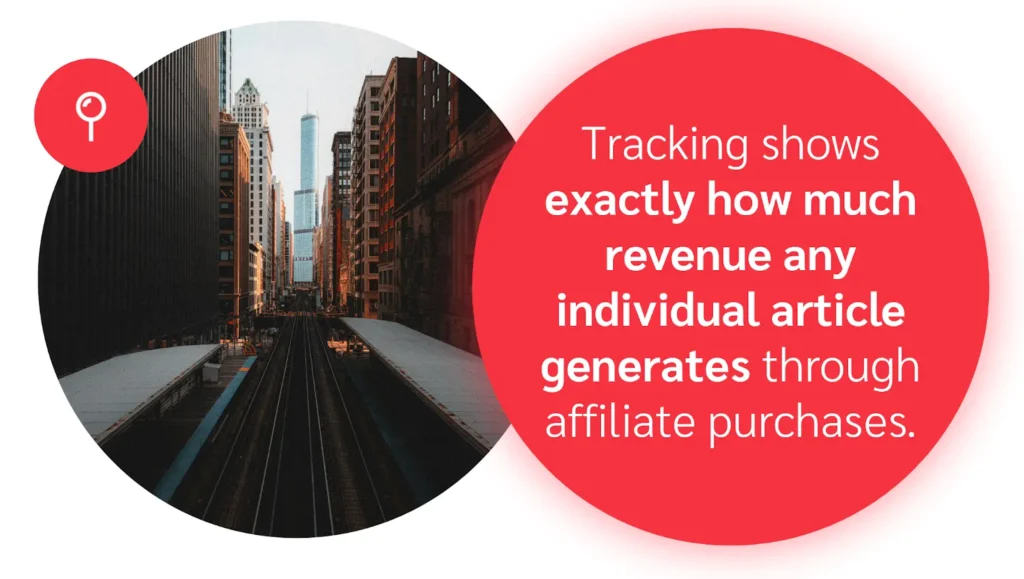
Better info, smarter strategy
Affiliate tracking gives you the insights you need to optimize your affiliate strategy. You’ll see what content you may want to double down on, which channels to invest in further, and what aspects of your program could be tweaked to increase performance.
Getting paid
You provide a valuable service to your brand partners and deserve to be paid fairly. Tracking ensures you can show your worth using hard data when negotiating with your brand partners.
On top of that, it allows you to find and fix broken links, safeguarding you from wasted clicks. Publishers lose an estimated $160 million monthly commissions from dead, outdated affiliate links.
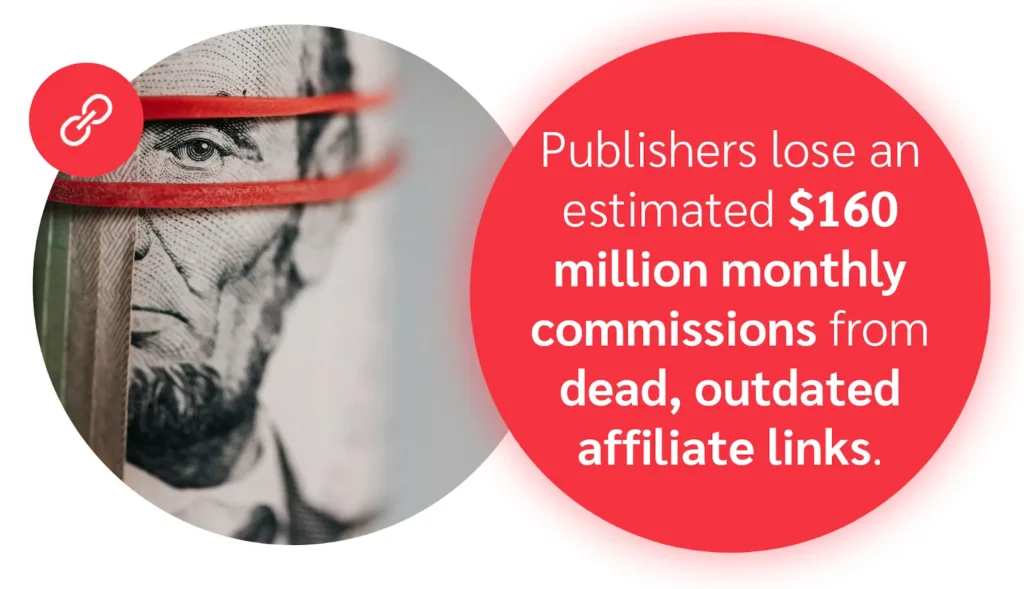
How does affiliate tracking work?
Generally speaking, affiliate tracking captures the customer page views, clicks, and conversion data that affiliates provide to a brand. Using this data, a tracking solution can generate reports to help brands understand the effectiveness of their affiliate marketing program.
It’s crucial for publishers to understand how tracking works so they can better optimize their programs. There are several options commonly used by brands and affiliate networks, each with its pros and cons.
Cookie tracking
Don’t try dipping these in milk. Cookies are pieces of data stored within a user’s web browser by a website. When the user returns, the website recognizes them. Unlike some other tracking methods, cookies allow you to track customers as they move around the internet and scroll around your website. Considering that cookies can provide a wealth of valuable data, it’s no wonder they’re the most common tracking method around.
Unfortunately, they come with a steep downside: users can delete them. They also don’t track a user across multiple devices, which prevents you from getting a complete picture of the user’s activity as they switch from their smartphone to their laptop and back. This tracking method may be on the way out thanks to legislation like the European Union’s General Data Protection Regulation (GDPR), allowing users to opt out.
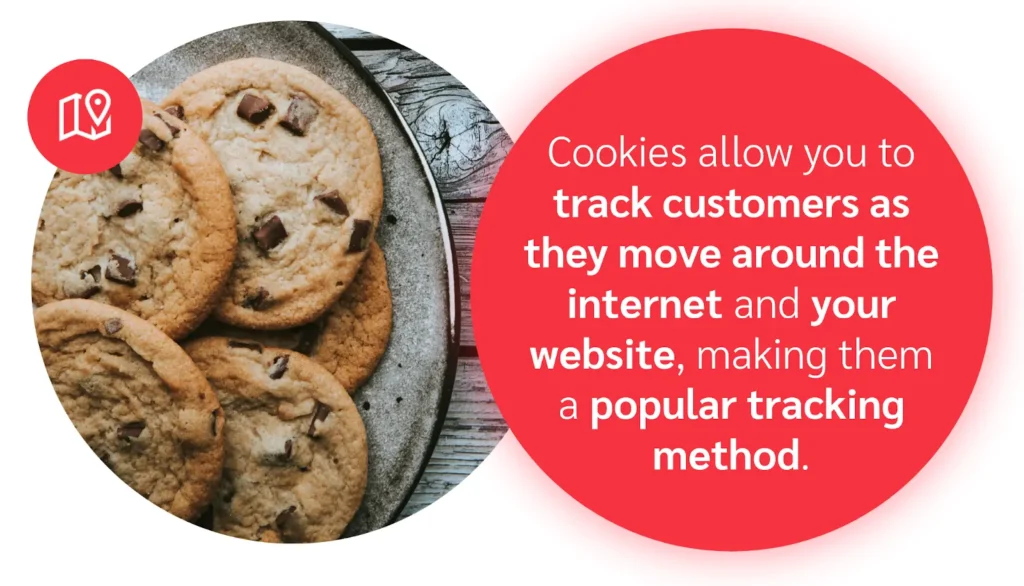
Postback URL tracking
Postback URLs are a form of cookieless tracking. Rather than relying on information stored in the user’s browser, this method uses an invisible URL to pass conversion data between a merchant and a marketer.
This tracking method gives you more accurate conversion data while avoiding the increasing roadblocks to cookie tracking. It also tends to be more secure since it’s easier for advertisers to detect affiliate fraud. Using this method isn’t just beneficial for accurate payment – it can also help build trust between publishers and advertisers.
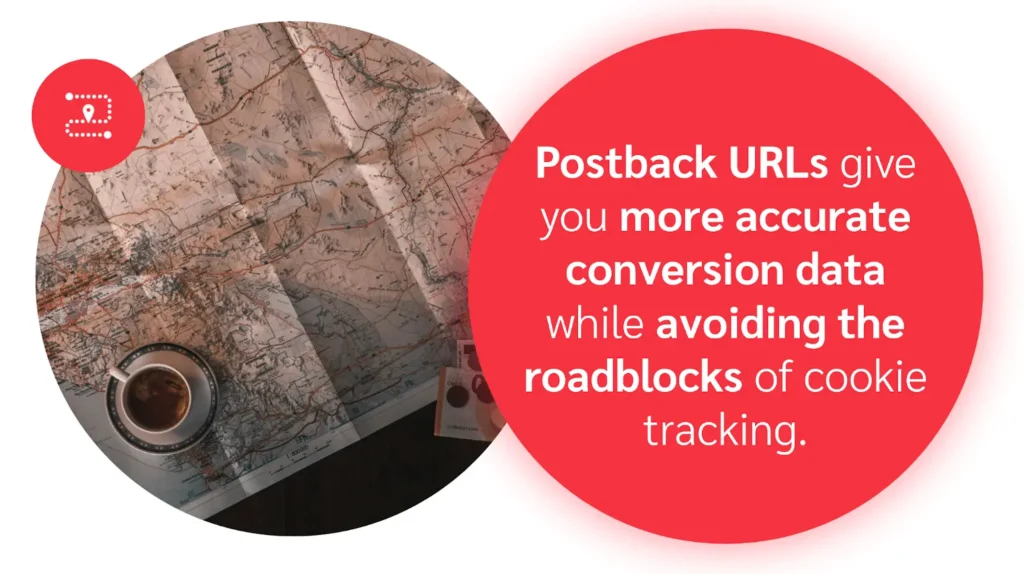
Pixel tracking
Pixel tracking uses a snippet of code on a web page to report information about a successful conversion back to the affiliate tracking platform. This “pixel,” typically placed on confirmation or “thank you” pages, fires when an affiliate-referred customer reaches the page. When triggered, the customer’s browser reaches out to a server for a 1×1 image file, literally a pixel, and transfers some identifying information in the process.
While it’s an accurate method of tracking conversions, pixel tracking has a distinct advantage for publishers. Publishers can also place pixels in email. This means that you aren’t limited to tracking website visits and can have a more holistic view of your affiliate traffic.

Affiliate fingerprint tracking
Your browser has a fingerprint. All your unique settings, from language to keyboard layout, come together to form a digital signature. Studies show that 80 to 90 percent of browser signatures are unique.
A relative newcomer to the affiliate tracking world, fingerprint monitoring uses this digital signature to recognize internet users as they travel from site to site. Like pixel and postback URL tracking, it’s practically invisible to users and difficult to dodge.
How brands know when to attribute a conversion to a publisher
Brands can use affiliate management software like impact.com to track and monitor the customer journey and see where it intersects with their affiliate partners. Many brands also offer affiliates unique URLs to use when directing their audience to buy from the brand.
Accurate attribution is a vital part of affiliate marketing. Without it, affiliates like you can go unrecognized and unpaid for their efforts. Both the brand and the affiliate have an interest in accurate tracking because getting it wrong can be costly for everyone.
How do brands attribute a conversion?
Brands credit publishers and affiliates for conversions in different ways. Some brands may attribute conversions to the last partner who drove the customer to a product before purchasing. They can also take a more holistic approach to compensate affiliates that helped drive the customer to convert at various points throughout the buyer’s journey. Typically, brands lay out their definition of a conversion in their affiliate contracts.
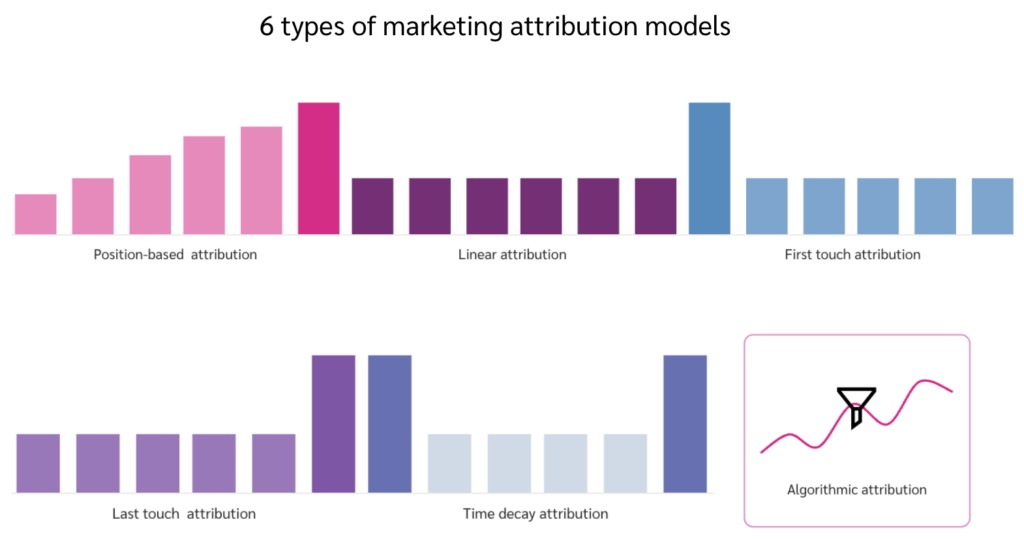
Brands commonly use these six attribution models:
- Last-click attribution: Exactly as it says, this simple method gives credit to whichever affiliate link the customer clicked last.
- First-click attribution: The opposite but equally simplistic method rewards top-of-funnel contributions to the customer journey.
- Linear attribution: Teamwork makes the dream work. This model rewards every affiliate a customer touches on the way to conversion equally.
- Position-based attribution: While this method acknowledges the value of participation by rewarding all involved, the reward changes based on where the customer and affiliate cross paths in the journey. Typically, the higher rewards go to the first and last click.
- Time-decay attribution: Compensation diminishes from the point of conversion. The last click gets the highest reward, while everyone else is compensated based on how close they were to conversion.
- Algorithmic attribution: This data-driven model uses machine learning and statistical modeling to optimize the portion of credit it assigns to each touchpoint based on effectiveness.
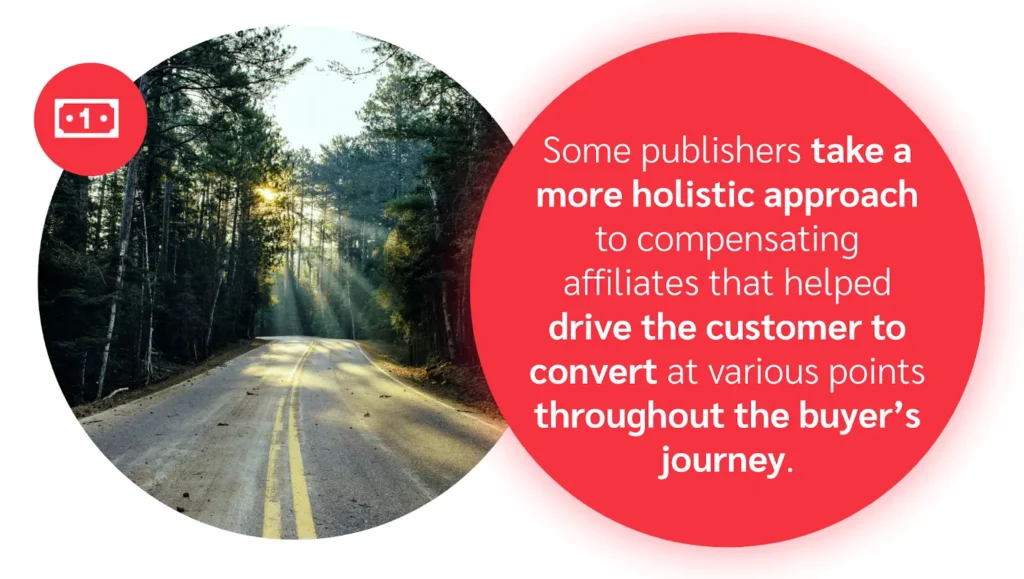
Who gets the commission when customers click two different affiliate links?
Attribution gets complicated when multiple affiliates are involved in the same stage of a customer’s path to conversion. It all comes down to the brand’s attribution model, which you can find defined in your contract.
What tracking information indicates which publisher is responsible for the conversion?
Let’s start with the link itself. Affiliate links contain several parameters that identify the affiliate publisher, the brand, and other information. You can locate these parameters by the question mark that precedes them in the URL. The parameters vary across affiliate programs, platforms, and brands, but each contains a unique identifier that identifies individual publishers and credits them for a conversion.
Brands also use other tracking methods to monitor where customers are coming from and use this data to identify which affiliate ultimately drove the conversion.
Common tracking problems publishers experience
Like most things in life, each tracking method has pros and cons, and the technology constantly changes. Understanding the common pitfalls allows you to select the best tracking methods for you and maximize your revenue.
Browser privacy
The efforts by web browser developers and governments to improve privacy and security for internet users also limit your ability to collect information. There will always be a tug-of-war between users and data collectors, and the tracking landscape will continue to shift and change.
Two big shifts, one corporate and one legal, shape your tracking options today:
- In 2018, the GDPR went into effect, restricting the kinds of data you can collect from individuals and how long you can retain it.
- In 2021, Google committed to ending support for third-party cookies within its Chrome browser in 2022. The company has since pushed this deadline to 2025, but there’s no time like the present to make the shift away from this tracking method.
Manual affiliate link tracking
While it seems simple, tracking affiliate conversions via links can be an error-prone process that leaves out a lot of information that a publisher needs. It relies on the customer to convert via the link, which isn’t always how publishers inspire their audience to make a purchase.
This method fails to account for the customer that uses your content as inspiration and then goes directly to the brand’s website to make the purchase. Like any manual process, it can also be time-consuming to implement and maintain.
Broken affiliate links
Dead links are useless to an affiliate; when links lead to 404 pages, the customer hits a brick wall. Publishers miss out on sales and give their readers a bad experience. It’s estimated that publishers and brands lose millions of clicks (and dollars) to link rot every month. Link rot is when a deep link decays and no longer earns money for a publisher.
Affiliate tracking fraud
Affiliate fraud occurs when cybercriminals game tracking systems with illegitimate techniques to collect unearned commissions.
These attacks can be a huge hit to a brand’s profits. For example, two fraudulent affiliates were convicted in 2013 of stealing $35 million from eBay using a technique called “cookie stuffing.” Understanding its effect on brands allows publishers to build better, long-lasting relationships.
However, in other instances, affiliate fraud affects publishers directly. Sometimes hackers use publisher affiliate links to access important information and redirect commission payments.
To build and maintain trust with your brand partners, be transparent about your third-party traffic sources. It’s also important to adopt security measures where the budget allows and present these protections as safeguards for your partners.

The benefits of using affiliate tracking software
Affiliate management software can change the game for publishers. This technology vastly improves your insight into the inner workings of your affiliate program. While affiliate tracking can be done manually, using affiliate tracking software allows you to scale more easily, optimize your program efficiency, and maximize your revenue.
Affiliate management software can do everything from detecting fraud to managing payments, but publishers can benefit from several key features.
Consolidated analytics dashboards
Many publishers have access to data, but it’s housed on different platforms and can only provide insights about one aspect of their affiliate program. All the data in the world can’t help you if you can’t see the big picture. Affiliate management software pulls together all your tracking data to give you access to everything you need to know in one place.
Customer journey tracking
To understand the customer experience from start to finish, you need to track the entire length of the customer journey. The best affiliate management software shows you the full experience customers have on your site, including how they get there and behave leading up to a purchase.
Content optimization
Affiliate management software allows you to track how users interact with your content and how effectively your affiliate content converts. Once you know which pieces of content generate the most revenue, you can build a strategy that capitalizes on that information by repeating previous successes.
Link generation
With software like impact.com for Publishers, you can automate the process of generating affiliate links. Link generation can be a bottleneck for the content creation process. For some publishers, creating each product link can take as much as 15 minutes per link. Automation solutions free up more time for publishers like you to do what they do best: create compelling content.
Repair broken links
As much as people say that online content lasts forever, the internet is inherently ephemeral. Even at the New York Times, a 2021 study found that 25 percent of all outbound links going back to 1998 were now inaccessible. This included six percent of links from as recently as 2018. For affiliates, this means lost revenue. Link scanning solutions like Trackonomics by impact.com identify dead links to ensure no click goes to waste.

How publishers optimize their affiliate tracking strategies
Once you’re equipped with the technology to analyze, automate, and enhance your affiliate program, you have all the tools you need to improve your affiliate content performance.
So, how should you put them to use? These tips will help you take full advantage of this revenue stream.
- Get granular. Tracking affiliate links across your website’s pages provides you with the most in-depth (and actionable) information.
- Automate, automate, automate. Streamline your affiliate content creation and optimization processes to reduce the time it takes to create and maintain your content.
- Keep your eyes peeled. Check your analytics regularly to identify gaps in your content and opportunities to convert readers into buyers. Recognize what’s working and find ways to repeat your success.
- Stay in touch. Talk to your brand partners about the methods that work best for you and ask what works for other publishers in their program. When it comes time to renegotiate your affiliate contract, leverage hard data to make your case and prove your value.

Want a solution that makes affiliate marketing easier?
With the right software, you can transform how you create affiliate content and maximize your revenue. A well-designed tool will provide a complete view of your program’s performance and where it can improve.
You don’t have to look far to find it, either. The solutions offered by impact.com for Publishers have everything you need to create, analyze, and optimize affiliate content at scale.
Learn more about implementing and scaling your affiliate revenue stream:



